VEGETARIAN
TAGINES & COUSCOUS



VEGETARIAN
TAGINES & COUSCOUS 60 delicious recipes for Moroccan one-pot cooking
Ghillie Baan photography by Steve Painter

DESIGN, PROP STYLING AND PHOTOGRAPHY Steve Painter EDITOR Rebecca Woods PRODUCTION Toby Marshall ART DIRECTOR Leslie Harrington EDITORIAL DIRECTOR Julia Charles FOOD STYLIST Lucy McKelvie FOOD STYLISTS ASSISTANT Ellie Jarvis INDEXER Hilary Bird First published in 2013 by Ryland Peters & Small 2021 Jockeys Fields London WC1R 4BW and 519 Broadway, 5th Floor New York, NY 10012 www.rylandpeters.com 10 9 8 7 6 5 4 3 2 1 Text Ghillie Basan 2013 Design and photographs Ryland Peters & Small 2013 The authors moral rights have been asserted. All rights reserved. No part of this publication may be reproduced, stored in a retrieval system or transmitted in any form or by any means, electronic, mechanical, photocopying or otherwise, without the prior permission of the publisher. eISBN: 978-1-84975-911-3 ISBN: 978-1-84975-432-3 A CIP record for this book is available from the British Library. US Library of Congress CIP data has been applied for. NOTES All spoon measurements are level unless otherwise specified.
All eggs are medium (UK) or large (US), unless otherwise specified. Uncooked or partially cooked eggs should not be served to the very old, frail, young children, pregnant women or those with compromised immune systems. Fruit and vegetables are medium-sized, unless otherwise stated. Chillies are fresh, unless otherwise stated. When a recipe calls for the grated zest of citrus fruit, buy unwaxed fruit and wash well before using. If you can only find treated fruit, scrub well in warm soapy water before using.
Ovens should be preheated to the specified temperatures. We recommend using an oven thermometer. If using a fan-assisted oven, adjust temperatures according to the manufacturers instructions. To sterilize preserving jars, wash them in hot, soapy water and rinse in boiling water. Place in a large saucepan and cover with hot water. With the saucepan lid on, bring the water to a boil and continue boiling for 15 minutes.
Turn off the heat and leave the jars in the hot water until just before they are to be filled. Invert the jars onto a clean dish towel to dry. Sterilize the lids for 5 minutes, by boiling or according to the manufacturers instructions. Jars should be filled and sealed while they are still hot. 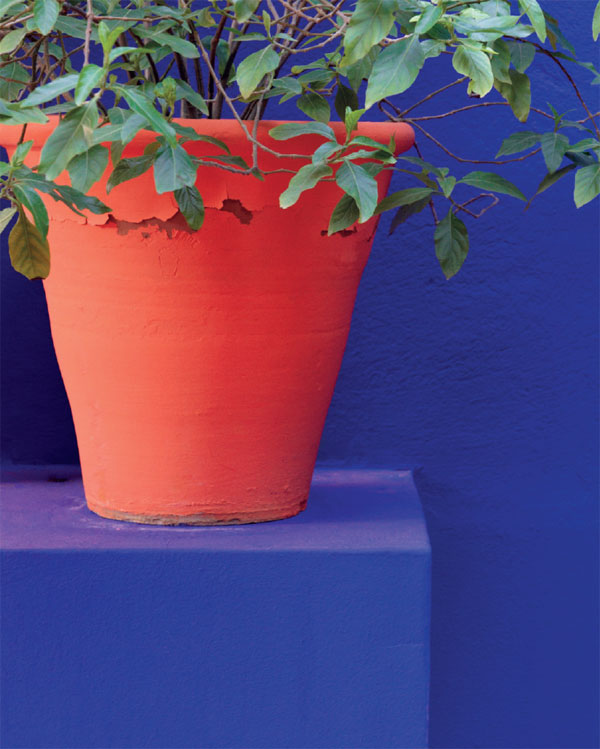 contents
contents 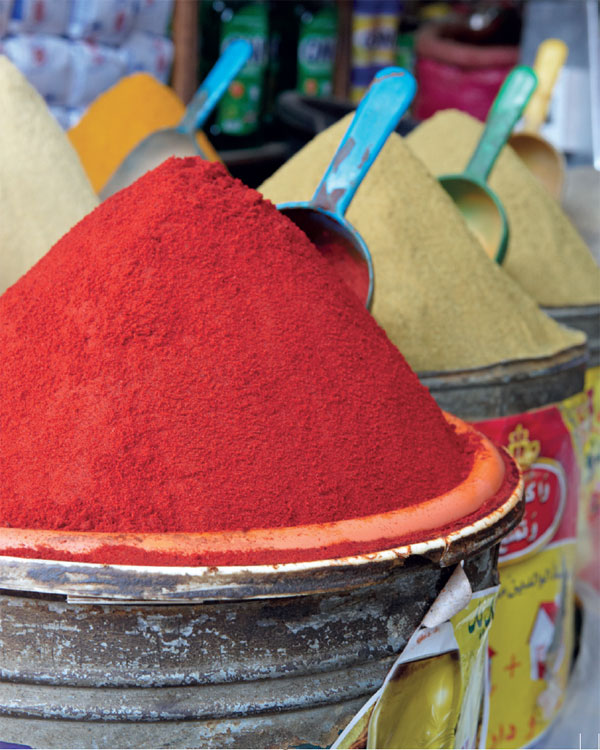
 Morocco is one of three countries known collectively as the Maghreb (Morocco, Tunisia and Algeria), perched at the northwest corner of Africa, like a culinary gateway to the native influences of central and northern Africa, to the ancient and medieval traditions of the Arab world to the east, and to the Andalusian flavours of southern Spain across the water. Geographically diverse, Morocco has a little bit of everything desert, mountains, fertile inner and coastal plains, and an enviable coastline on the Mediterranean and Atlantic oceans and remarkably for its location it experiences all four seasons, providing the soil with sufficient rain for substantial crops of wheat, maize, vegetables, herbs and fruit.
Morocco is one of three countries known collectively as the Maghreb (Morocco, Tunisia and Algeria), perched at the northwest corner of Africa, like a culinary gateway to the native influences of central and northern Africa, to the ancient and medieval traditions of the Arab world to the east, and to the Andalusian flavours of southern Spain across the water. Geographically diverse, Morocco has a little bit of everything desert, mountains, fertile inner and coastal plains, and an enviable coastline on the Mediterranean and Atlantic oceans and remarkably for its location it experiences all four seasons, providing the soil with sufficient rain for substantial crops of wheat, maize, vegetables, herbs and fruit.
The indigenous population of Morocco are the Berbers, whose culinary roots have absorbed the influences of early traders, invaders and colonizers: the Phoenicians, who established trading posts along the coast; the Carthaginians in the 5th century BC; the Romans who made the region a Roman province under Emperor Claudius; and the Byzantines when the Roman Empire divided. The 7th-century Arab invasions across the Middle East and North Africa had a big impact on the region, both in a cultural and culinary way, as most of the inhabitants were converted to Islam, the Arabic language, and the restrictions that the religion imposed. The Arabs also brought the spices of the East, such as ginger, saffron, caraway and cumin, flavours that were quickly absorbed into the traditional cuisine, and they introduced the idea of matching sweet with sour, using honey and fruit, to impart a taste they had adopted from the Persians. It is this sweet and sour taste, combined with spices, that gives the Moroccan tagines their own distinctive flavour. The Moors who were expelled from Spain introduced olives, olive oil, tomatoes and paprika, and the Jewish refugees fleeing the Spanish Inquisition, brought with them valuable preserving techniques, hence the ubiquitous preserved lemons. The Ottoman Turks also left their mark of sophisticated pastry making and kebabs, and the Spanish and French who colonized sections of Morocco had a lasting influence on the cooking styles, such as soups and sophisticated fish dishes, and onthe caf culture, wine-making, and the language of the region.
Even today, many of the dishes cooked in Morocco are known by their French names. 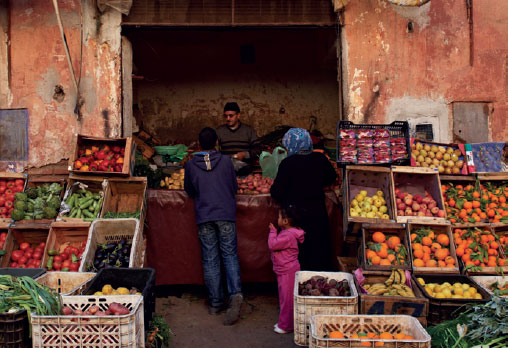 Moroccan markets The souks and the old medinas are the lungs of Moroccos culinary culture. Magical and enticing, filled with arresting aromas and colourful displays, they are bustling venues for haggling, meal planning and snacking. Everything you need to make a meal is widely available in the street markets: dried apricots, dates, prunes and figs; roasted pistachios, almonds and walnuts; big bunches of fresh flat leaf parsley, mint and coriander/cilantro; tubs of spices and dried herbs; the distilled waters of rose petals and orange blossom; sacks of flour, grains and couscous; earthenware tagines with their domed or conical lids; and large copper kdras for celebratory feasts. It is here that you will also find the seasonal vegetables on display leeks and carrots the length of baseball bats; aubergines/eggplants like big boxing gloves; juicy tomatoes gleaming like Christmas baubles; globe artichokes on their stems like giant thistles in a vase; and onions, yams, squashes and sweet potatoes in all shapes and sizes. You will also find tiny stalls stacked from floor to ceiling with colourful jars of pickles and preserves; olive sellers displaying every conceivable olive in bowls, jars, wooden vats and earthenware crocks some salted or preserved in brine, others stuffed or marinated with herbs and spices; and barrels and bottles of pressed olive oil, pumpkin seed and sunflower seed oils, and the precious, dark-red, argan oil, which is highly regarded for both cosmetic and culinary uses.
Moroccan markets The souks and the old medinas are the lungs of Moroccos culinary culture. Magical and enticing, filled with arresting aromas and colourful displays, they are bustling venues for haggling, meal planning and snacking. Everything you need to make a meal is widely available in the street markets: dried apricots, dates, prunes and figs; roasted pistachios, almonds and walnuts; big bunches of fresh flat leaf parsley, mint and coriander/cilantro; tubs of spices and dried herbs; the distilled waters of rose petals and orange blossom; sacks of flour, grains and couscous; earthenware tagines with their domed or conical lids; and large copper kdras for celebratory feasts. It is here that you will also find the seasonal vegetables on display leeks and carrots the length of baseball bats; aubergines/eggplants like big boxing gloves; juicy tomatoes gleaming like Christmas baubles; globe artichokes on their stems like giant thistles in a vase; and onions, yams, squashes and sweet potatoes in all shapes and sizes. You will also find tiny stalls stacked from floor to ceiling with colourful jars of pickles and preserves; olive sellers displaying every conceivable olive in bowls, jars, wooden vats and earthenware crocks some salted or preserved in brine, others stuffed or marinated with herbs and spices; and barrels and bottles of pressed olive oil, pumpkin seed and sunflower seed oils, and the precious, dark-red, argan oil, which is highly regarded for both cosmetic and culinary uses.
If you travel in the south of Morocco, you may see the extraordinary sight of goats climbing the thorny branches of the stout argan trees to eat the green fruit and, waiting patiently, are the herders who collect their droppings to extract the nuts, which are given to the village women who dry and grind the kernels to produce this rich, nutty oil. 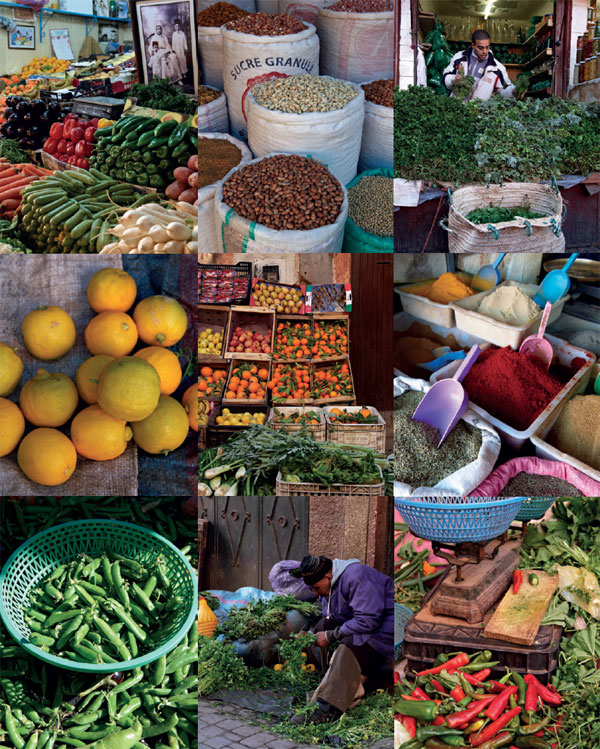

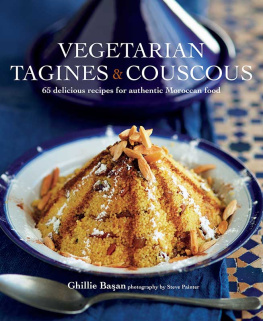
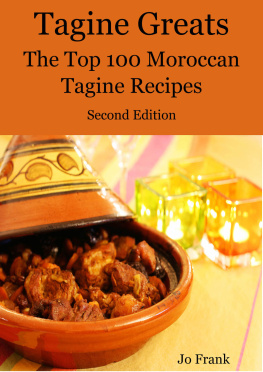
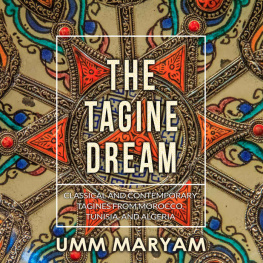
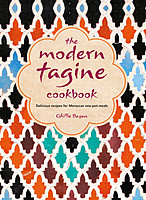
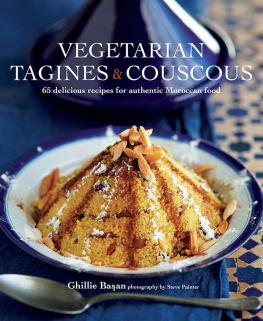
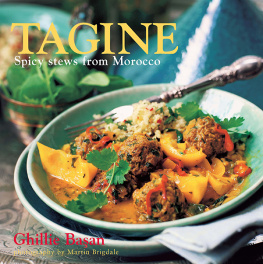
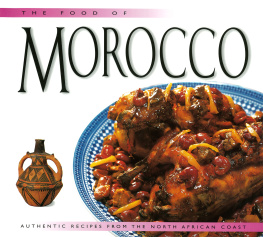
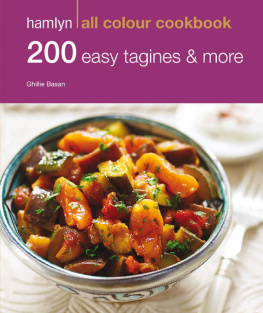
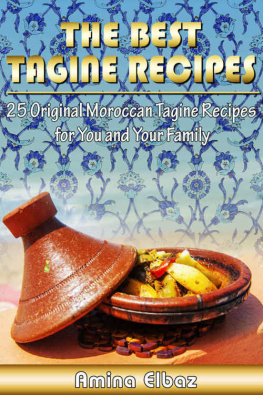
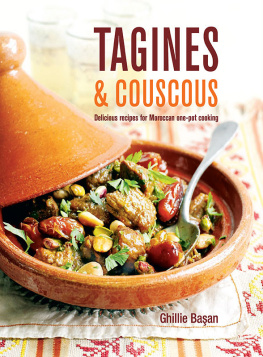


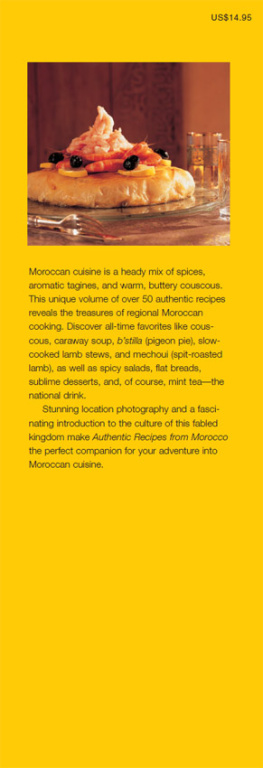



 VEGETARIAN
VEGETARIAN DESIGN, PROP STYLING AND PHOTOGRAPHY Steve Painter EDITOR Rebecca Woods PRODUCTION Toby Marshall ART DIRECTOR Leslie Harrington EDITORIAL DIRECTOR Julia Charles FOOD STYLIST Lucy McKelvie FOOD STYLISTS ASSISTANT Ellie Jarvis INDEXER Hilary Bird First published in 2013 by Ryland Peters & Small 2021 Jockeys Fields London WC1R 4BW and 519 Broadway, 5th Floor New York, NY 10012 www.rylandpeters.com 10 9 8 7 6 5 4 3 2 1 Text Ghillie Basan 2013 Design and photographs Ryland Peters & Small 2013 The authors moral rights have been asserted. All rights reserved. No part of this publication may be reproduced, stored in a retrieval system or transmitted in any form or by any means, electronic, mechanical, photocopying or otherwise, without the prior permission of the publisher. eISBN: 978-1-84975-911-3 ISBN: 978-1-84975-432-3 A CIP record for this book is available from the British Library. US Library of Congress CIP data has been applied for. NOTES All spoon measurements are level unless otherwise specified.
DESIGN, PROP STYLING AND PHOTOGRAPHY Steve Painter EDITOR Rebecca Woods PRODUCTION Toby Marshall ART DIRECTOR Leslie Harrington EDITORIAL DIRECTOR Julia Charles FOOD STYLIST Lucy McKelvie FOOD STYLISTS ASSISTANT Ellie Jarvis INDEXER Hilary Bird First published in 2013 by Ryland Peters & Small 2021 Jockeys Fields London WC1R 4BW and 519 Broadway, 5th Floor New York, NY 10012 www.rylandpeters.com 10 9 8 7 6 5 4 3 2 1 Text Ghillie Basan 2013 Design and photographs Ryland Peters & Small 2013 The authors moral rights have been asserted. All rights reserved. No part of this publication may be reproduced, stored in a retrieval system or transmitted in any form or by any means, electronic, mechanical, photocopying or otherwise, without the prior permission of the publisher. eISBN: 978-1-84975-911-3 ISBN: 978-1-84975-432-3 A CIP record for this book is available from the British Library. US Library of Congress CIP data has been applied for. NOTES All spoon measurements are level unless otherwise specified.  contents
contents 
 Morocco is one of three countries known collectively as the Maghreb (Morocco, Tunisia and Algeria), perched at the northwest corner of Africa, like a culinary gateway to the native influences of central and northern Africa, to the ancient and medieval traditions of the Arab world to the east, and to the Andalusian flavours of southern Spain across the water. Geographically diverse, Morocco has a little bit of everything desert, mountains, fertile inner and coastal plains, and an enviable coastline on the Mediterranean and Atlantic oceans and remarkably for its location it experiences all four seasons, providing the soil with sufficient rain for substantial crops of wheat, maize, vegetables, herbs and fruit.
Morocco is one of three countries known collectively as the Maghreb (Morocco, Tunisia and Algeria), perched at the northwest corner of Africa, like a culinary gateway to the native influences of central and northern Africa, to the ancient and medieval traditions of the Arab world to the east, and to the Andalusian flavours of southern Spain across the water. Geographically diverse, Morocco has a little bit of everything desert, mountains, fertile inner and coastal plains, and an enviable coastline on the Mediterranean and Atlantic oceans and remarkably for its location it experiences all four seasons, providing the soil with sufficient rain for substantial crops of wheat, maize, vegetables, herbs and fruit. Moroccan markets The souks and the old medinas are the lungs of Moroccos culinary culture. Magical and enticing, filled with arresting aromas and colourful displays, they are bustling venues for haggling, meal planning and snacking. Everything you need to make a meal is widely available in the street markets: dried apricots, dates, prunes and figs; roasted pistachios, almonds and walnuts; big bunches of fresh flat leaf parsley, mint and coriander/cilantro; tubs of spices and dried herbs; the distilled waters of rose petals and orange blossom; sacks of flour, grains and couscous; earthenware tagines with their domed or conical lids; and large copper kdras for celebratory feasts. It is here that you will also find the seasonal vegetables on display leeks and carrots the length of baseball bats; aubergines/eggplants like big boxing gloves; juicy tomatoes gleaming like Christmas baubles; globe artichokes on their stems like giant thistles in a vase; and onions, yams, squashes and sweet potatoes in all shapes and sizes. You will also find tiny stalls stacked from floor to ceiling with colourful jars of pickles and preserves; olive sellers displaying every conceivable olive in bowls, jars, wooden vats and earthenware crocks some salted or preserved in brine, others stuffed or marinated with herbs and spices; and barrels and bottles of pressed olive oil, pumpkin seed and sunflower seed oils, and the precious, dark-red, argan oil, which is highly regarded for both cosmetic and culinary uses.
Moroccan markets The souks and the old medinas are the lungs of Moroccos culinary culture. Magical and enticing, filled with arresting aromas and colourful displays, they are bustling venues for haggling, meal planning and snacking. Everything you need to make a meal is widely available in the street markets: dried apricots, dates, prunes and figs; roasted pistachios, almonds and walnuts; big bunches of fresh flat leaf parsley, mint and coriander/cilantro; tubs of spices and dried herbs; the distilled waters of rose petals and orange blossom; sacks of flour, grains and couscous; earthenware tagines with their domed or conical lids; and large copper kdras for celebratory feasts. It is here that you will also find the seasonal vegetables on display leeks and carrots the length of baseball bats; aubergines/eggplants like big boxing gloves; juicy tomatoes gleaming like Christmas baubles; globe artichokes on their stems like giant thistles in a vase; and onions, yams, squashes and sweet potatoes in all shapes and sizes. You will also find tiny stalls stacked from floor to ceiling with colourful jars of pickles and preserves; olive sellers displaying every conceivable olive in bowls, jars, wooden vats and earthenware crocks some salted or preserved in brine, others stuffed or marinated with herbs and spices; and barrels and bottles of pressed olive oil, pumpkin seed and sunflower seed oils, and the precious, dark-red, argan oil, which is highly regarded for both cosmetic and culinary uses.